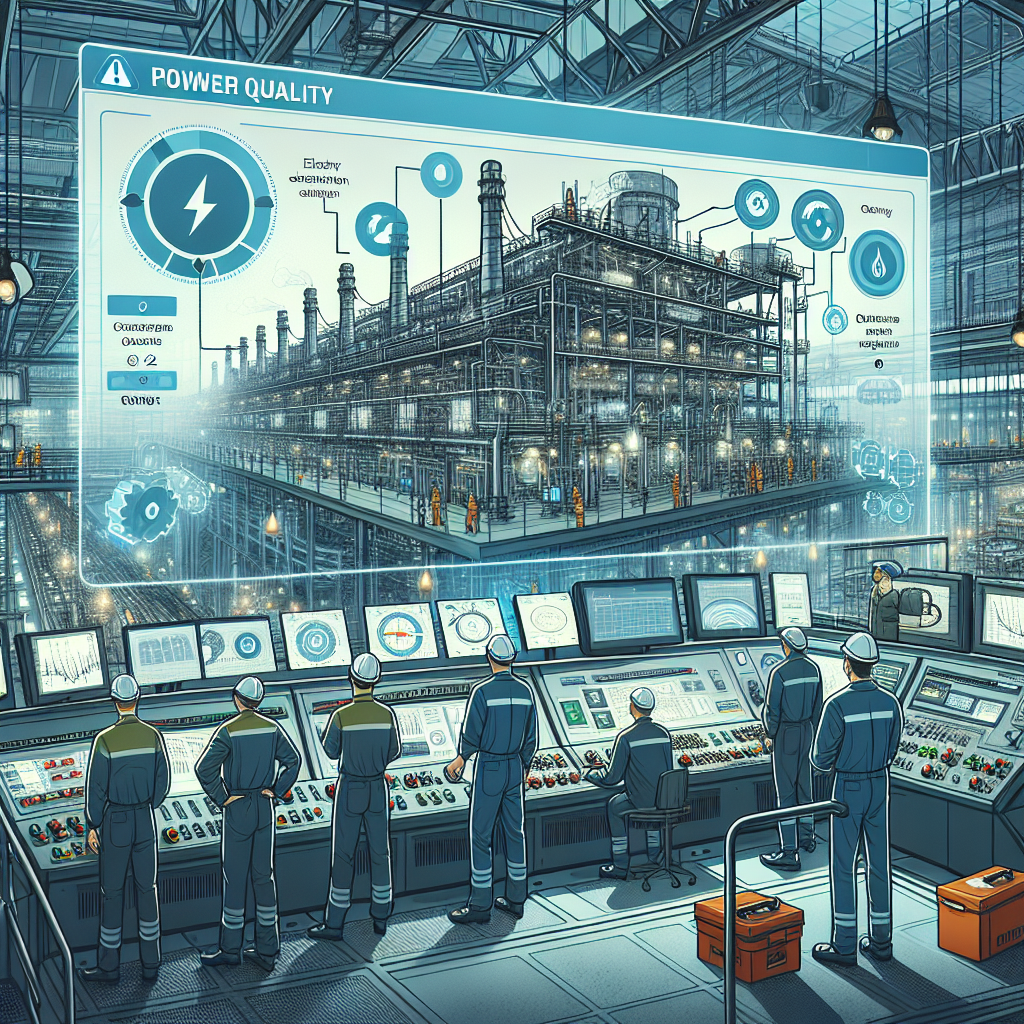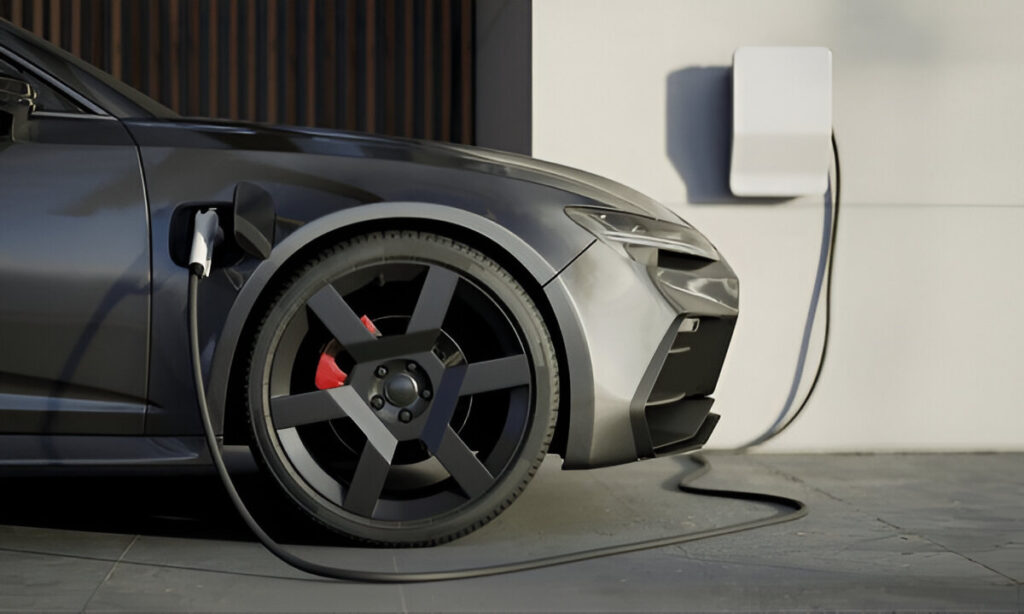In today’s industrial world, maintaining optimal power quality is critical to ensuring the smooth operation of manufacturing processes, protecting sensitive equipment, and minimizing downtime. Power quality problems can lead to costly damages, equipment failure, and unscheduled shutdowns. For this reason, implementing power quality monitoring in industrial facilities is essential. In this blog post, we’ll explore why power quality monitoring is so important and how it can help businesses avoid disruptions and maintain efficiency.
What is Power Quality Monitoring?
Power quality monitoring refers to the process of continuously tracking and analyzing the electrical supply to a facility to ensure that it meets the required standards. Power quality is determined by factors such as voltage stability, frequency consistency, and the presence of disturbances like harmonics or transients. Industrial facilities rely on a consistent and reliable power supply to ensure operations run smoothly. Monitoring power quality allows facility managers to detect and correct issues before they become major problems.
Why Power Quality Monitoring is Crucial for Industrial Facilities
- Prevent Equipment Damage and Downtime Industrial equipment, such as machinery, computers, and PLCs (Programmable Logic Controllers), is sensitive to fluctuations in power supply. A sudden surge or dip in voltage, or even a transient event, can damage expensive equipment and cause production delays. Power quality monitoring can identify such issues early on, enabling timely interventions before equipment is compromised. For instance, a surge protector or arc fault circuit interrupter (like an arc detector breaker) can be installed to protect machines from voltage spikes, reducing the risk of costly repairs or replacements. Power quality monitoring gives facilities a heads-up on potential threats to avoid unplanned downtimes.
- Improve Energy Efficiency By continuously monitoring power quality, businesses can identify inefficiencies within their systems. Unstable voltage levels, harmonics, and other power quality issues can increase energy consumption and lead to higher utility bills. Monitoring and addressing these inefficiencies can help facilities optimize their energy use and reduce costs over time. Implementing energy-efficient solutions, such as proper electrical panel upgrades or energy-efficient lighting, can further improve overall energy consumption. If you’re looking for effective solutions for energy savings, don’t hesitate to check out our electrical panel services for upgrades or landscape lighting for outdoor areas to minimize your electricity use.
- Ensure Compliance with Standards Many industrial sectors, such as pharmaceuticals, food processing, and electronics manufacturing, are subject to strict regulations regarding power quality. Non-compliance with these standards can result in penalties or violations that harm a business’s reputation. Power quality monitoring allows facility managers to ensure that their electrical systems comply with industry standards and regulations, avoiding legal or financial repercussions. It also provides valuable data for audits and reports required by regulatory bodies.
- Identify and Resolve Power Disturbances Power disturbances, including voltage sags, surges, flickers, and transients, are common in industrial facilities. These disturbances can negatively impact equipment performance and overall product quality. By implementing a power quality monitoring system, businesses can pinpoint the source of disturbances and take corrective actions to mitigate their effects. This leads to increased productivity, reduced defects, and enhanced product quality.
- Predictive Maintenance and Cost Savings Power quality monitoring systems not only detect real-time power issues but also offer predictive insights. By analyzing data over time, businesses can forecast potential electrical problems before they happen. This predictive capability helps schedule proactive maintenance, avoiding unexpected breakdowns and costly repairs. A system can warn of issues like outdoor electrical outlet malfunctions or GFCI outlet problems that could signal underlying wiring issues. Emergency electrical services can be scheduled for timely repairs. Early detection and intervention lead to cost savings by preventing major breakdowns, extending the lifespan of equipment, and improving overall facility uptime.
Key Components of Power Quality Monitoring Systems
- Voltage Monitors – These devices measure the voltage level to ensure it stays within acceptable limits. If the voltage falls too low or rises too high, it can affect the equipment’s performance.
- Harmonics Analyzer – Harmonics are caused by non-linear loads, such as variable frequency drives or UPS systems. Excessive harmonics can damage equipment, and monitoring helps detect these irregularities.
- Power Meters – These devices monitor the power usage and load on various circuits within the facility. They help analyze energy consumption trends and identify areas where energy is being wasted.
- Surge Protection Devices – Devices like surge protectors or arc detector breakers help protect sensitive equipment from surges or spikes in voltage, preventing damage to machinery.
- Real-time Alerts – Modern power quality monitoring systems come with automated alerts to notify operators when something goes wrong. This quick response time is crucial to minimizing damage.
How to Implement Power Quality Monitoring in Your Facility
To get started with power quality monitoring in your industrial facility, follow these steps:
- Conduct an Assessment – Begin by assessing the power supply and identifying key areas where monitoring is needed. Look for equipment that’s highly sensitive to power fluctuations, such as commercial electricians equipment or machinery operating at full capacity.
- Choose the Right Monitoring Equipment – Depending on your facility’s specific needs, select the appropriate monitoring devices. Work with experienced commercial electrical contractors to choose the best equipment that suits your operations.
- Set Up the System – Install the necessary monitoring devices, including voltage monitors, power meters, and surge protection systems. Ensure the devices are integrated with your facility’s control system for real-time monitoring and alerts.
- Regularly Review Data – Continuously analyze the data generated by your power quality monitoring system. Identify trends and address issues as they arise. Schedule regular maintenance, especially for commercial electrical services that require preventive check-ups.
- Train Employees – Ensure your employees are properly trained to understand power quality data and respond effectively to potential issues. A well-informed team is key to maintaining power quality and preventing disruptions.
Conclusion
Power quality monitoring is a critical part of running a reliable and efficient industrial facility. By continuously monitoring power supply parameters, businesses can avoid costly downtime, improve energy efficiency, enhance equipment lifespan, and ensure compliance with regulatory standards. With the right monitoring equipment, predictive maintenance tools, and professional help from commercial electricians, industrial businesses can safeguard their operations and keep production running smoothly.
By integrating power quality monitoring into your facility’s maintenance routine, you ensure a high level of protection for your equipment, a reduction in unnecessary energy consumption, and the ability to respond quickly to potential electrical issues before they escalate.
If you’re looking for reliable electrical services and solutions, our team of expert commercial electricians is here to help. We also offer a range of services like electrical circuit tracer and upgrade electrical panels to keep your facility’s electrical systems in top condition.





